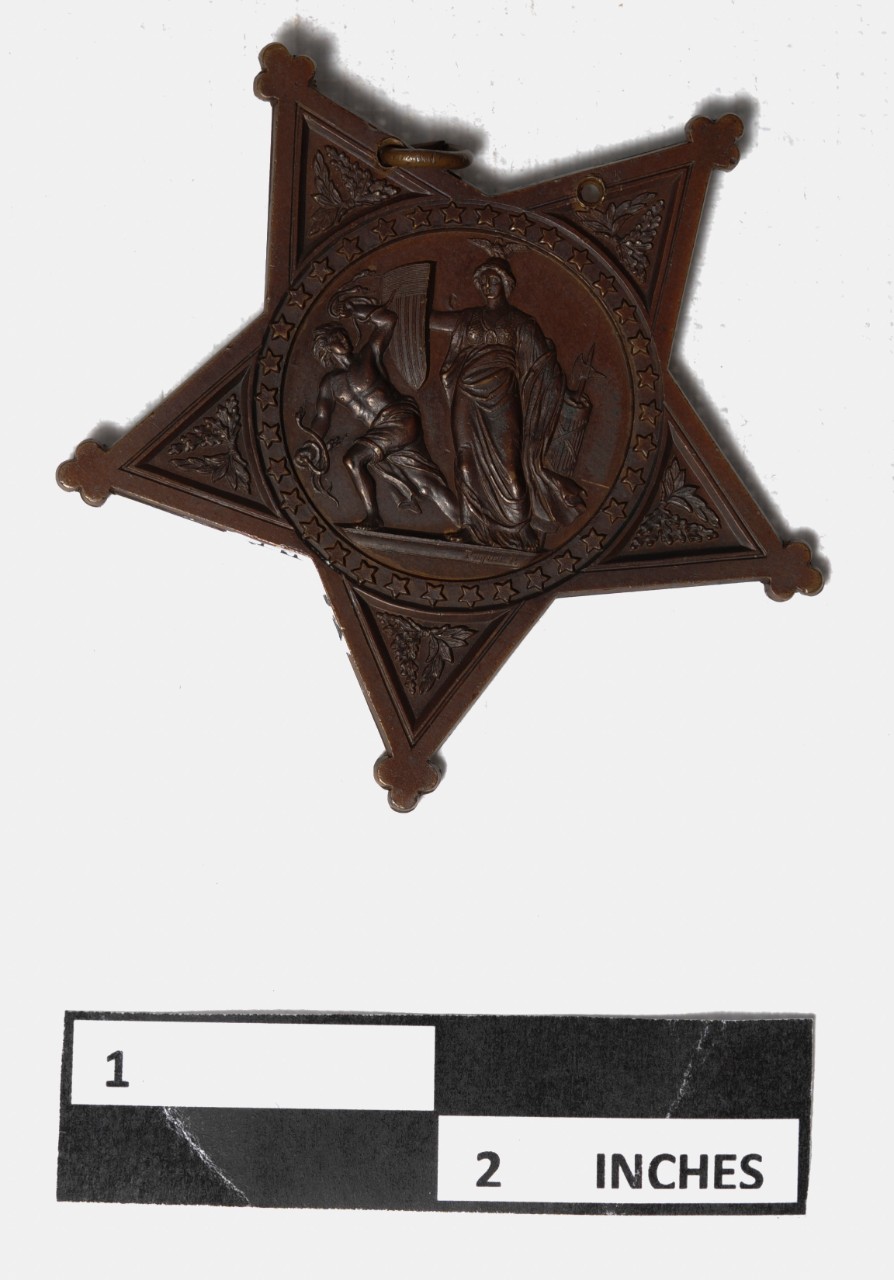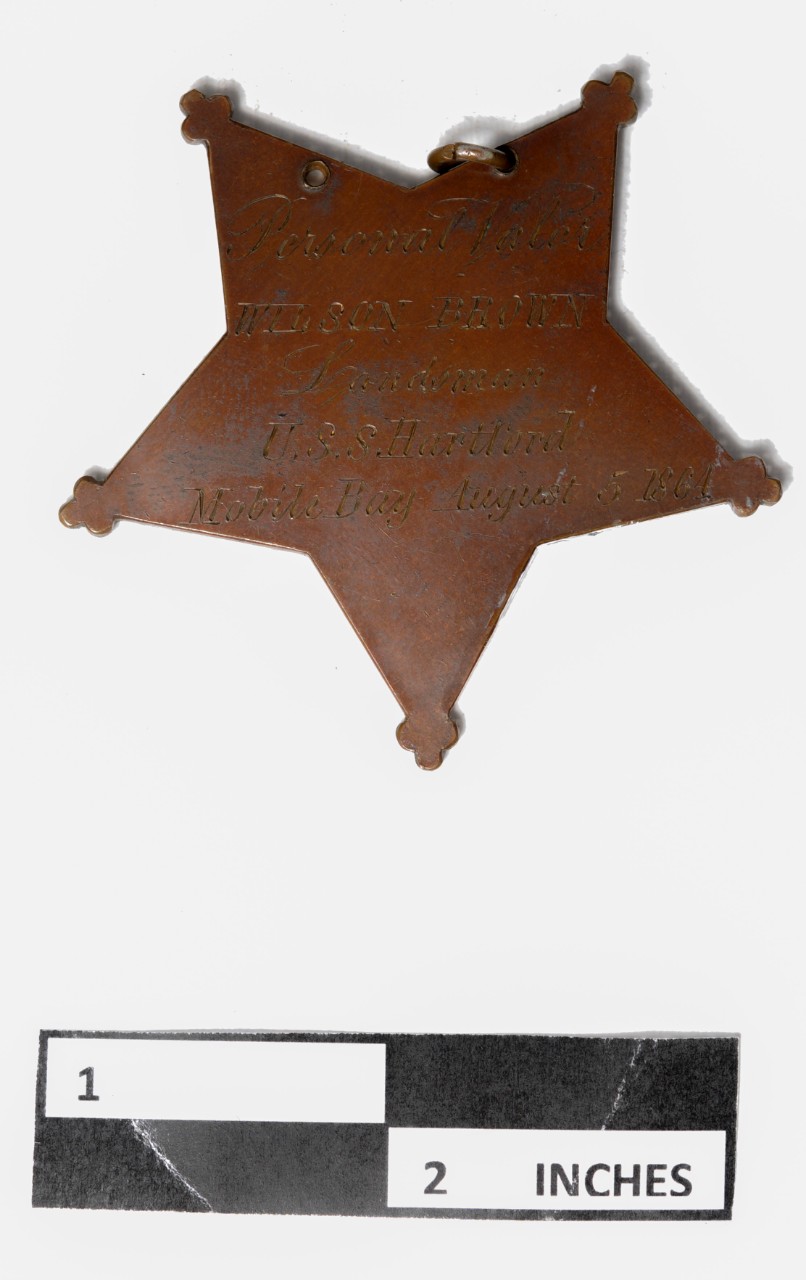Medal of Honor awarded to Wilson Brown, USS Hartford

Title: Medal of Honor, Wilson Brown, Shell Boy/Landsman USS Hartford, Battle of Mobile Bay
Accession #: NHHC 1957-2-F
Circa: 1864
Size: 2 x 2
Medium: Bronze
Location: Headquarters Artifact Collection, Naval History and Heritage Command
Wilson Brown was born in 1841 on Botany Bay Plantation in Natchez, Mississippi. At the outbreak of the Civil War, he was a slave at Carthage Plantation. Brown enlisted with the Union Navy along the banks of the Mississippi River in March of 1863 as contraband. His first shipboard station was as a 3rd Class Boy aboard USS Hartford. During the Hartford's engagement at the Battle of Mobile Bay on 5 August 1864, Brown and another landsman, John Lawson, were serving on a shell whip crew. The shell whip is a device that transports ammunition powder from the magazine to the firing deck via man power. A Confederate shell exploded near Brown's crew during the battle killing four of the six men. Both Brown and another man were knocked below deck. Brown was knocked unconscious and broke several ribs along his left side while the man that fell on him died. Lawson was hit with shrapnel in his leg, but was the first to return to the shell whip. After regaining consciousness, Brown returned to his station and resumed his duties with Lawson. For their actions they were awarded the Medal of Honor. Wilson Brown and John Lawson are two of eight known African-American Navy Medal of Honor recipients during the Civil War. Following his service on the USS Hartford, Wilson Brown would go on to serve aboard USS North Carolina, with the Potomac Flotilla, and was stationed at the Washington Navy Yard before being discharged on 19 May 1865.
At the time of his discharge at the Washington Navy Yard, Brown had moved up the ranks to 1st Class Boy. Boys and landsmen were the lowest ranks for a Navy sailor and were designated for those enlisted sailors that had no experience on a ship and were often relegated to manual labor. Both his headstone at the Natchez National Cemetery in Mississippi and his Medal of Honor citation identify him as a Landsman.



